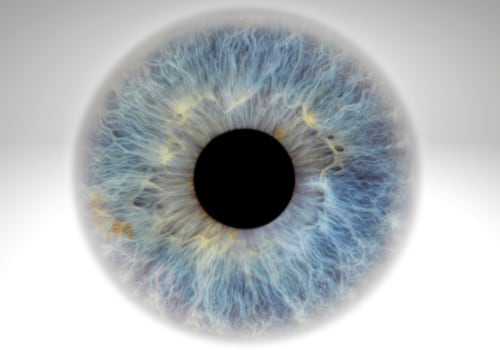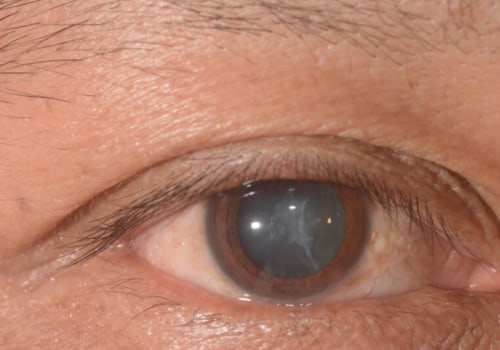Cataract surgery is a common procedure used to treat cataracts, a condition that causes blurred vision, floaters, and other vision problems. It involves removing the cloudy lens from the eye and replacing it with an artificial lens. Cataract surgery is usually performed on an outpatient basis and can be done in as little as 12 to 48 minutes. It is a safe and effective procedure that can improve vision and reduce the risk of complications. Cataracts are caused by a buildup of proteins in the lens of the eye, which can lead to clouding of the lens and vision problems.
The most common symptoms of cataracts include blurred vision, floaters, droopy eyelids, and light sensitivity. Cataracts can also cause image size disparity, dry eye, and inflammation. In some cases, cataracts can be caused by toxic anterior segment syndrome (TASS) or other medical conditions such as stroke or gout. Cataract surgery is performed using specialized surgical instruments and techniques. During the procedure, the surgeon will make a small incision in the eye and use suction to remove the cloudy lens.
The surgeon will then replace the lens with an artificial intraocular lens (IOL). The IOL is designed to improve vision and reduce the risk of complications. The recovery time for cataract surgery varies depending on the type of procedure performed. Most patients experience some degree of vision improvement within a few days after surgery. However, it may take several weeks or months for full vision improvement to occur.
During this time, it is important to follow your doctor's instructions for post-operative care, including using eye drops, wearing an eye shield or sunglasses when outdoors, and avoiding strenuous activities.
There are several potential complications associated with cataract surgery. These include infection, bleeding, retinal detachment, dry eye, inflammation, and infection control. To reduce the risk of complications, it is important to follow your doctor's instructions for pre-op steps such as using antibiotics or anesthetics before surgery and avoiding heavy lifting or strenuous exercise after surgery.
In addition to following your doctor's instructions for pre-op steps and post-operative care, there are several other things you can do to reduce your risk of complications from cataract surgery. These include wearing protective eye shields when outdoors, avoiding swimming or reading after surgery, and avoiding strenuous activities such as heavy lifting or strenuous exercise. Cataract surgery can improve vision and reduce the risk of complications.
However, it is important to understand that there are risks associated with any surgical procedure. To reduce your risk of complications from cataract surgery, it is important to follow your doctor's instructions for pre-op steps and post-operative care. Additionally, making lifestyle changes such as eating a healthy diet and exercising regularly can help reduce your risk of complications from cataract surgery.
Phacoemulsification vs. MECS
Phacoemulsification and Micro-incisional cataract surgery (MICS) are two types of cataract extraction. Both procedures use an ultrasonic probe to break up the lens and suction out the pieces. After the cataract is removed, an intraocular lens is implanted. The results vary depending on the procedure.
The patient has a precise corneal incision in phacoemulsification, and an ultrasonic probe is used to dissolve the cataract. It is then suctioned out of the eye with a vacuum. This method is more invasive than MSICS but also has fewer complications. If the doctor finds that the patient has high-risk factors, he may need additional instruments or viscoelastic devices.
While MSICS is more affordable than phacoemulsification but has higher complication rates. Complications can include surgically induced astigmatism, infections, and retinal tear. To reduce these risks, the surgeon should ensure that the patient has a liberal viscoelastic cover and be screened for ocular surface complications after the procedure.
Micro-incisional cataract surgery is a recent innovation that allows a small incision to be used. Instead of using a traditional scalpel to make a large incision, a guided laser is used to make a small incision. Although these procedures are relatively new, many ophthalmic surgeons prefer to use these procedures over the phacoemulsification method.
Both methods are considered safe and effective, but choosing the right cataract surgery for the patient is essential. An ophthalmic surgeon has the critical role of identifying the best surgical option for the patient. Also, the surgeon must have the expertise to perform the procedures.
Manual minor incision cataract surgery (MSICS) is a technique that has gained popularity over the past several years because of its low cost and short recovery time. These procedures have improved the extracapsular cataract extraction (ECCE) method and provide better surgical results. Because of the reduced dependency on technology, the system has become the most popular surgical management procedure in developing nations.
Micro-incisional cataract surgery has been shown to have similar long-term outcomes to phacoemulsification. However, further studies are necessary to determine if it is beneficial or disadvantageous. In addition, some studies suggest that patients may experience increased postoperative dry-eye disease with femtosecond lasers.
Although phacoemulsification is the most common form of cataract surgery, it can be uncomfortable. Depending on the number of cataracts, the surgeon may have to remove more of the natural lens, resulting in a larger incision. In addition, during the procedure, a large percentage of the corneal endothelium is damaged. Prophylactic intracameral antibiotics to prevent endophthalmitis has been shown to lower the rates.
Micro-incisional cataract surgery was developed after several innovations. First, it was discovered that the anatomical wound strength is greater when the incision is smaller. This made it possible to insert a foldable intraocular lens (IOL) through a small incision.
Double vision after cataract surgery
Double vision after cataract surgery is distressing to both patients and physicians. This complication is caused by many factors. The most common causes are pathologic alterations of the eyes and neurologic disorders. However, a few patients also develop sensory exotropia. Therefore, it is essential to find the underlying cause of double vision and treat it appropriately.
A British Columbia Children's Hospital study reviewed records of patients with persistent double vision after cataract surgery. The authors determined that ocular motility patterns were a useful predictor of the underlying etiology of double vision.
Patients were categorized based on the nature of their post-surgical double vision. Divergence insufficiency/paresis and convergence insufficiency patterns were the most prevalent. One-third of the patients presented with unrecognized systemic disorders. Other patients had documented strabismus or childhood strabismus.
Surgical trauma is a significant etiology of double vision after cataract extraction. The cornea can become hazy and swollen. Fluid accumulation in the eye can lead to blurry vision and infection. Medicated eye drops can treat the problem. If fluid accumulates behind the lens, a steroid shot can be given.
Anesthetic trauma is another potential etiology. During anesthetic administration, the anesthetic needle can puncture the retina. Occasionally, blood vessels can leak from the retina into the inner eye. Some cataract surgeries are performed with topical anesthesia. Topical anesthesia may also cause double vision after cataract surgery.
Myotoxicity is a very common etiology of double vision. This etiology can masquerade as contralateral superior oblique palsy. In addition, myotoxicity can be a manifestation of a preexisting oblique palsy.
Another common etiology of double vision after cataract extraction is decompensation of a preexisting phoria. These two etiologies are interrelated. Therefore, treating both may result in improved image in both eyes.
In addition, treating with prisms can be effective when there is a significant difference in VA between the eyes.
There are a variety of procedures to treat double vision after cataract surgery. Medicated eye drops are used to reduce the inflammation of the cornea, and a YAG laser capsulotomy can be performed to create a small hole in the lens capsule. After surgery, the patient should wear sunglasses to minimize the risk of light-related problems.
Double vision after cataract surgery is often cured by prisms. In the present study, sixty-four percent of the patients who experienced double vision after surgery were prescribed prisms in combination with other treatments. For seven of these patients, the prismatic effect of the lenses was a cause of the double vision.
Patients were referred to the orthoptic clinic of this institution by 39 surgeons. Medical histories were reviewed for past medical problems, ophthalmic history, surgical techniques, and anesthetic techniques. In addition, information on the initial nature of the post-surgical double vision was obtained from the referring cataract surgeon's case notes.
Although the rate of diplopia after cataract surgery is relatively low, it can be a bothersome complication. Fortunately, it is usually temporary. Performing a thorough history will help distinguish between surgically-induced diplopia and an existing condition.
Complications
Cataract surgery is relatively safe, but certain postoperative complications can occur. These can be minor or serious and can affect the outcome of the operation.
Infection is a common postoperative complication. Some signs and symptoms of infection include a yellow or green discharge, pain, swelling, and redness in the eye. Getting the infection looked at as soon as possible is essential if you notice any of these symptoms. You can also get antibiotics or eye drops prescribed by your ophthalmologist.
Endophthalmitis is an infection that can occur after cataract surgery. This condition is caused by microorganisms that enter the eye. The symptoms of this complication are pain and light sensitivity. However, this complication can be reduced with intracameral antibiotics.
Retinal detachment is another complication that can arise after cataract surgery. It is a sight-threatening complication that can cause loss of vision. A tear can form on the retina, leading to complete detachment. While this complication can be repositioned, it can also result in chronic irreversible cornea swelling. Other symptoms of this complication are floaters and floating spots in the visual field. You may need to have more than one operation to stop this complication.
Several factors increase the risk of retinal detachment after cataract surgery. Patients with a history of Fuchs' dystrophy or other ocular abnormalities are at higher risk. People with glaucoma or age-related macular degeneration can also have a higher risk. Surgical repair can be complicated and requires tiny incisions. The surgeon can replace the lens with an anterior chamber IOL during the operation. Occasionally, the iris can be repositioned as well.
Another complication that can arise after cataract surgery is macular edema. It is an inflammatory condition that affects the macula. Fluorescein angiography can detect macular edema. Nonsteroidal and steroid treatments are usually used to reduce swelling. However, surgical repair is often necessary in more advanced cases.
One of the most common postoperative complications after cataract surgery is cystoid macular edema. This complication typically occurs after four to six weeks after surgery. Cystoid macular edema can be treated with topical steroids and medications. Additionally, your doctor can recommend diet modifications to treat the underlying cause of the edema.
Postoperative complications of cataract surgery can occur immediately after the operation or at a later point in time. Some of the most common complications are elevated pressure in the eye, retained lens fragments, and infections. Even though they are rare, cataract surgery complications can significantly impact the patient's visual outcome.
For more information on postoperative cataract complications, talk to your ophthalmologist. Be sure to ask questions about how you can prevent them. Most side effects resolve shortly after the operation. However, a thorough pre-operative assessment will help you and your doctor decide whether you need cataract surgery.



